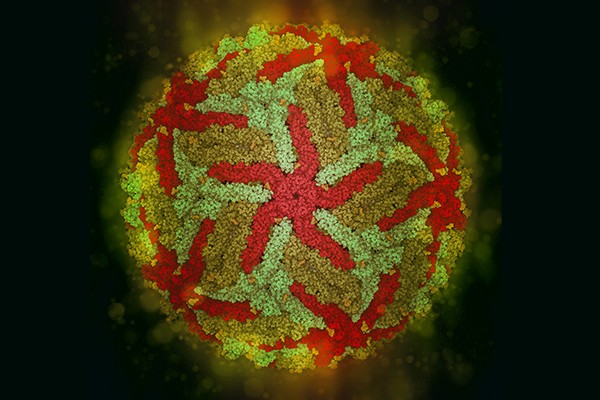Exploring DNA Damage Repair
A cell’s ability to repair damaged DNA is key to its maintaining normal biology and protecting against cell death. But the repair process can be a two-sided coin: keeping a normal cell healthy is beneficial; keeping a malignant cell healthy can promote cancer. The mechanisms by which cells recognize and attempt to repair damage are myriad and complex; and individual DNA-repair proteins can be involved in multiple pathways. Jefferson researchers across several fields are working to understand the genomic and molecular processes at work in DNA repair—and the problems created when those processes go awry.
Anna Pluciennik, PhD, research assistant professor of biochemistry and molecular biology, studies DNA repair processes in the central nervous system and their connection to neurodegenerative disorders. In particular, she is working to understand genomic and molecular mechanisms underlying conditions such as Huntington’s disease and spinal and bulbar muscular atrophy that are caused by a large number of repeated nucleotide sequences in neurons’ DNA. The extensive repeats lead to aggregation of proteins in the nucleus that cause cell death. Dr. Pluciennik is studying a series of genes involved in the DNA repair process that have been implicated in Huntington’s disease — working to tease apart the effect of each of these “mismatch repair” genes on the development of the extensively repeated sequences. She is also using patient-derived induced pluripotent stem cells in an effort to identify ways to intervene in the processes that create the protein aggregations. Dr. Pluciennik observes that, “An array of neurodegenerative diseases preferentially afflict older individuals. Given our aging population, it is important to better understand age-related changes in DNA repair capability—as well as the impact of long-term accumulation of DNA damage.”
Elise Fouquerel, PhD, assistant professor of biochemistry and molecular biology, is exploring the roles played by proteins called Poly (ADP-ribose) polymerases (PARPs) in chromosomal stability and the development of malignancies. Dr. Fouquerel—who has received a prestigious NIH “Pathway to Independence Award”—is studying how PARPs contribute to the maintenance of telomeres under stress conditions. Telomeres are DNA segments that protect the ends of chromosomes from progressive degradation and from unnecessary attention by repair systems that mistake the chromosome ends for breaks in its strands. But telomeres themselves can be broken down, leaving chromosomes vulnerable to damage that turns the cell malignant. Dr. Fouquerel’s research has demonstrated how chronic oxidative stress accelerates telomere shortening; and she is now exploring PARPs’ role in protecting telomeres from that stress. “Given the critical role of telomere crisis in driving carcinogenesis, this work could have important implications for development of therapies that address the ways that oxidative stress drives tumor development,” she explains.
Matt Schiewer, PhD assistant professor of urology and cancer biology, is also studying the roles that PARPs play in development of malignancies. His objective in focusing on these DNA repair-enzymes is to spur development of new ways of treating prostate and bladder cancer. In one current study, he is defining the downstream biological consequences of PARP function and examining the respective roles of two PARP pathways. “Ideally, we will identify points in these pathways that could be targeted to interrupt prostate tumor development,” Dr. Schiewer says. He is also conducting a series of studies that, he hopes, “will revolutionize our understanding of PARP function in bladder cancer, delineate the consequences of PARP activity in this tumor type and clarify the best way to implement PARP inhibition-based treatments.


